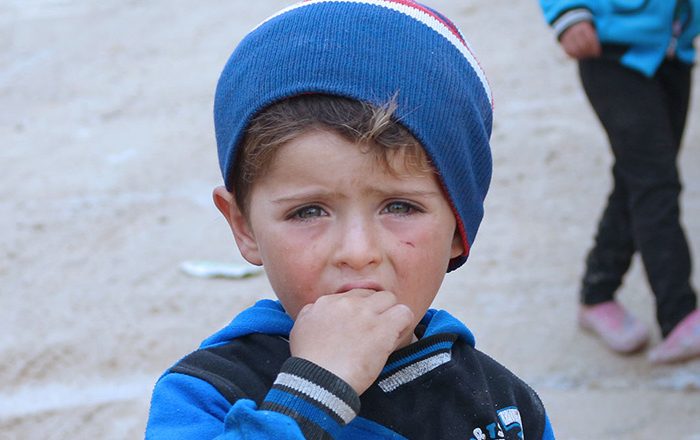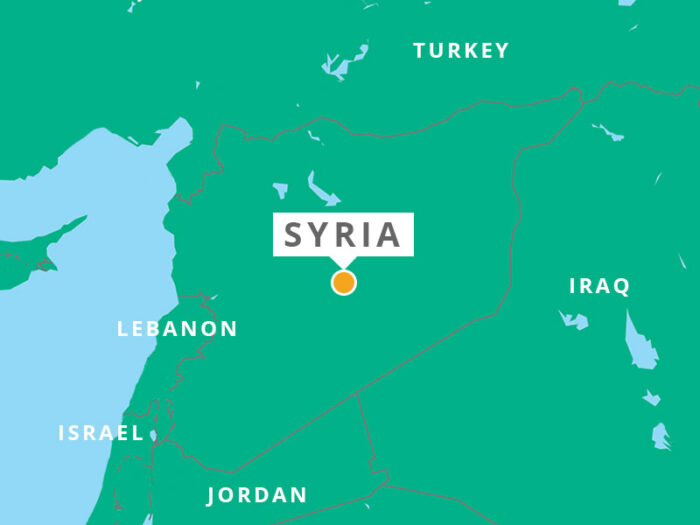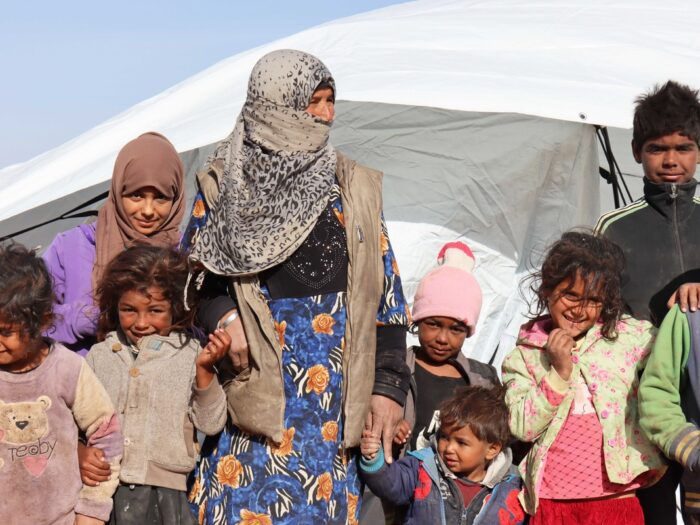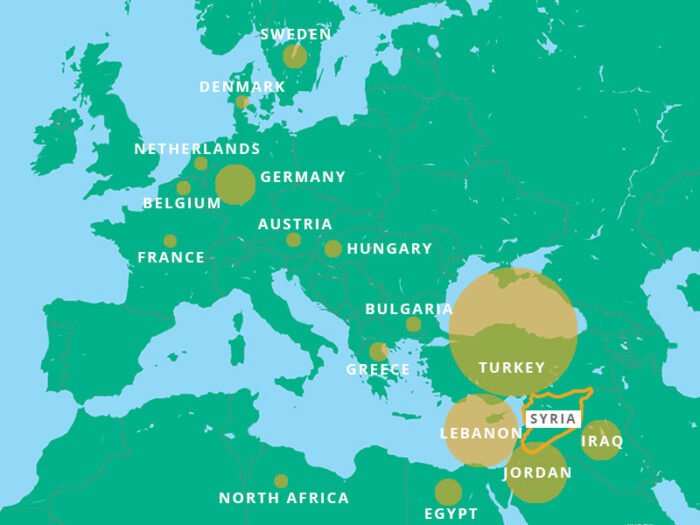
Syria
We are providing shelter for families who have been forced to leave their homes due to the conflict in Syria.

The conflict in Syria dates back to 2011.
Many people were unhappy about the high levels of unemployment, widespread corruption and lack of political freedom.
Inspired by the ‘Arab spring’ uprisings in Tunisia and Egypt, peaceful protests started in March.
However, the peaceful demonstrations were met by swift government opposition.
When the government used deadly force to crush the dissent, protests erupted nationwide. The violence rapidly escalated, eventually giving way to a brutal war.
7 things you need to know about the Syrian conflictThere are many players in the Syrian conflict.
The conflict began as a Syrian uprising against the Government of Syria and its leader, President Bashar al-Assad.
Since then, many groups have joined the fighting, with many fighting each other.
These groups include the Free Syrian Army (FSA), Kurdish Rebel Fighters, so-called Islamic State, Jabhat Fath al-Sham, Hezbollah and the Syrian Democratic Forces (SDF).
International involvement has shaped the course of the conflict, too.
Russia and Iran have backed the Syrian government. At the same time, the opposition has been supported by Turkey, several Western powers and some Gulf Arab states.
Ultimately, there is no clear frontline in this war. It’s a fractured conflict with multiple parties.
Civilians are caught in the middle of shifting power dynamics and territories, not knowing where will be safe for them and their families.
Many peace negotiations have taken place over the years, but they have failed.
The United Nations held the first peace talks in 2012 in Geneva. A transition period which would result in Assad’s removal was discussed, but in 2015 Assad began consolidating his position with Russia and Iran’s backing.
In 2016 there was a second attempt at peace talks in Astana, the capital of Kazakhstan. ‘De-escalation zones’ were agreed upon, which temporarily reduced the violence. Eventually, it failed when the Syrian regime continued airstrikes in the de-escalation areas.
Two years later in January 2018, Russia sponsored new talks in Sochi. But the Syrian opposition refused to take part in the meeting because Assad’s removal from power was not a pre-condition for the talks.


Right now, at least 11 million people have fled their homes.
The need for emergency shelter supplies remains, as families are forced from their homes by renewed conflict, and existing shelters need repair after years of use.
There is still an exhausting level of upheaval for many and there is no clear path to peace.
Donate now
The majority of Syrian refugees have stayed in the Middle East. Syria’s neighbours, Lebanon, Jordan and Turkey are hosting over 90%.
Other families have fled to neighbouring Iraq, Egypt or North Africa.
Some refugees have fled to European countries.
At the height of the European migrant crisis in 2015, 1.3 million Syrians requested asylum with Germany, Sweden, Hungary, Greece, Austria, the Netherlands, Belgium, Denmark, France and Bulgaria receiving the most applications.
There is still no clear path to peace.
The Syrian conflict has turned into a complex, three-part war. It involves Turkish-backed forces in the northwest who are fighting Syrian government forces, but are also opposed to US-backed Syrian Kurdish control in the northeast.
With a new US President in power, it is hoped that US foreign policy may create a resolution between Turkey and the Syrian Kurds, but that could complicate any peace agreement.
Turkish-backed forces in the northwest, are adamant that any peace agreement involves transitioning away from Syrian President Bashar al-Assad.
This is something that government-supporting Russia and Iran will be reluctant to consider.
There is hope, however. Within Syria, families demonstrate incredible resilience and resourcefulness, creating homes, running schools and businesses and giving children some sense of normality, all within displacement camps.
And beyond Syria’s borders, an emerging generation of young refugees are building their skills and seeking solutions through further education, determined to rebuild their shattered country when they can at last return.